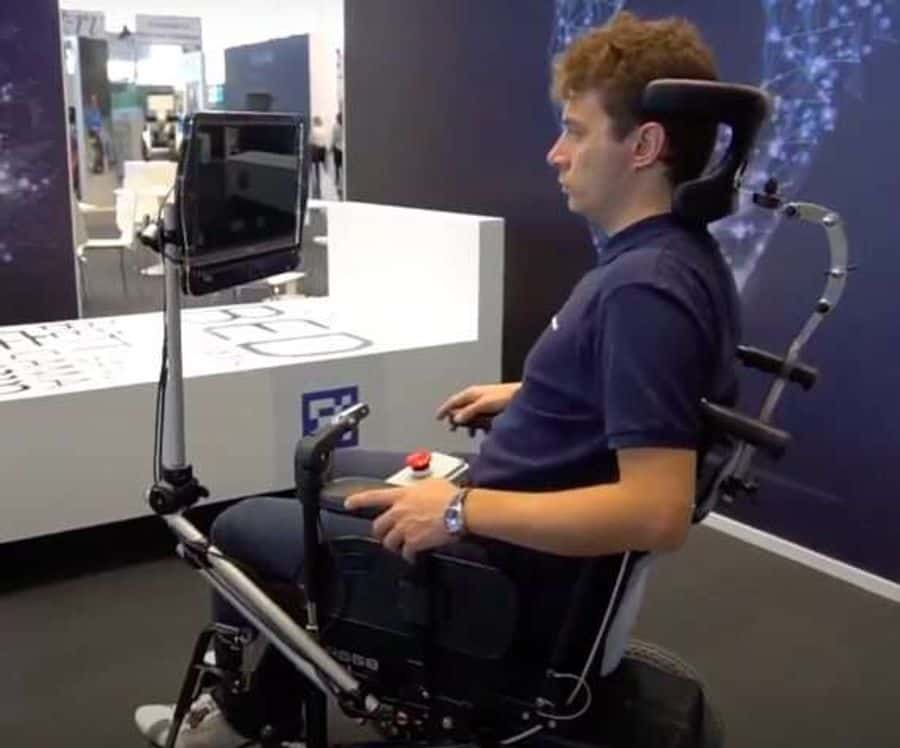Study shows semi-autonomous eye-controlled powerchair is safe for domestic use

Italian researchers have created a safe and efficient semi-autonomous wheelchair that moves according to users’ eye movements called RoboEYE, which could enable people with severe motor disabilities to control the wheelchair’s movements.
The newly developed powered wheelchair was presented in a paper published in MDPI’s Technologies journal by its researchers at the University of Trento and University of Padu in Italy.
Entitled ‘RoboEye, an Efficient, Reliable and Safe Semi-Autonomous Gaze Driven Wheelchair for Domestic Use’, the paper looks at how RoboEYE can enable disabled people to move easily and independently around their homes.
The eye-movement-controlled powerchair integrates the functionalities of mobile robotic systems into a standard powerchair.
When navigating their surrounding environment, users sitting on the wheelchair can choose between two different driving strategies, one based on eye movements and the other based on pointing to a desired destination.
The study found that RoboEYE gave users greater independence, offered minimum invasiveness to the user and uses low-cost hardware solutions. This, the paper says, resulted in an efficient, safe and cost-effective mobility solution.
“Our aim was to design an innovative, cost-effective and user-friendly control system based on gaze detection for a power wheelchair to allow users with any severe motor disability to move easily and autonomously within their homes,” Alessandro Luchetti and Luca Maule, who carried out the study, told TechXplore.
RoboEYE was designed by Luca Maule in collaboration with the MIRo lab, a research team within the University of Trento’s Industrial Engineering Department.
“The most intuitive and direct modality foresees the continuous control of frontal and angular wheelchair velocities by gazing at different areas of a monitor,” Luchetti and Maule said.
“The semi-autonomous modality, on the other hand, allows navigation toward a selected point in the environment by just pointing and activating the wished destination while the system autonomously plans and follows the trajectory that brings the wheelchair to that point.”
Luchetti, Maule and their colleagues evaluated the effectiveness of the wheelchair in numerical simulations and real-world experiments in which volunteers tested RoboEYE and provided feedback about their experiences.
The findings they collected were highly promising and highlighted the safety, reliability and efficiency of their unique wheelchair design.
“Compared to other solutions, RoboEYE is minimally invasive to its users, it integrates functionalities derived from the field of mobile robotics, it takes into account the role of uncertainty in human-machine interactions, and it is based on low-cost hardware solutions,” Luchetti and Maule said.
The researchers state that the dual navigation system they designed could also be applied to other wheelchairs or structures of different shapes and sizes to assist people with severe motor disabilities.
However, one limitation of the paper found that RoboEYE is mostly suitable for domestic and indoor use and that the eye-tracking would be affected by sunlight if the system were used outdoors.
You can read the full RoboEYE paper here

